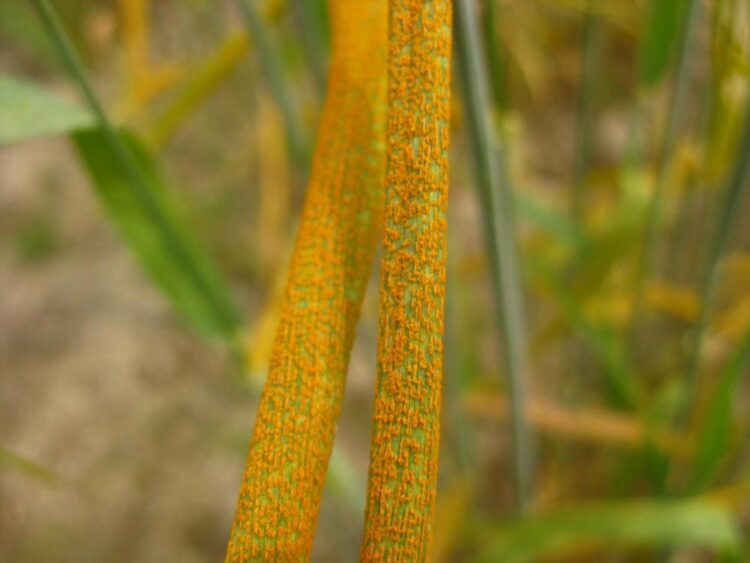New study identifies wheat varieties that resist the destructive stripe rust disease

Stripe rust is one of the most destructive wheat diseases in the world, especially in the United States. While the disease can be controlled by chemicals, those may be harmful to humans, animals, and the environment and the application can cost millions of dollars. Rather than use chemicals, many farmers would prefer to grow wheat varieties that resist stripe rust and the development of such varieties is a top priority for wheat breeding programs.
Credit: Lu Liu, Meinan Wang, Zhiwu Zhang, Deven R. See, and Xianming Chen
Stripe rust is one of the most destructive wheat diseases in the world, especially in the United States. While the disease can be controlled by chemicals, those may be harmful to humans, animals, and the environment and the application can cost millions of dollars to wheat production. Rather than use chemicals, many farmers would prefer to grow wheat varieties that resist stripe rust and the development of such varieties is a top priority for wheat breeding programs.
To help develop these varieties, scientists from the US Department of Agriculture – Agricultural Research Service (USDA-ARS) and Washington State University recently studied stripe rust resistance genes in 616 spring wheat varieties using the genome-wide association study approach. They used the GMS platform recently developed by the USDA-ARS Wheat Health, Genetics, and Quality Research Unit, which reduces the cost greatly compared to the Wheat SNP Chips.
“We tested the wheat varieties with five predominant strains of the wheat stripe rust pathogen under controlled greenhouse conditions and in field locations under natural infection of the pathogen, and characterized using a genotyping by multiplex sequencing (GMS) technique and molecular markers linked to previously reported stripe rust resistance genes,” explained Xianming Chen. “We identified 37 genes, including 10 new genes, that show resistance to stripe rust.”
Wheat growers should choose the resistant varieties identified in this study. Growing more and more resistant varieties will reduce chemical application and prevent stripe rust damage. These resistant varieties can also be used by wheat breeders to develop new varieties with improved stripe rust resistance and other desirable agronomic traits.
This study was possible due to the GMS platform developed by co-author Deven See’s lab, which was considerably cheaper than other platforms. Chen was initially concerned that the platform might not identify a large number of genes associated with stripe rust resistance but was surprised to report results that were better than expected.
For more information on this important study, read “Identification of Stripe Rust Resistance Loci in U.S. Spring Wheat Cultivars and Breeding Lines Using Genome-Wide Association Mapping and Yr Gene Markers,” which includes a large amount of data, such as which wheat varieties are resistant or susceptible to stripe rust and which varieties have which individual genes for stripe rust resistance. This article also includes methodology and techniques for studying important plant traits. This article was published in the August issue of Plant Disease.
Media Contact
All latest news from the category: Agricultural and Forestry Science
Newest articles

A universal framework for spatial biology
SpatialData is a freely accessible tool to unify and integrate data from different omics technologies accounting for spatial information, which can provide holistic insights into health and disease. Biological processes…

How complex biological processes arise
A $20 million grant from the U.S. National Science Foundation (NSF) will support the establishment and operation of the National Synthesis Center for Emergence in the Molecular and Cellular Sciences (NCEMS) at…

Airborne single-photon lidar system achieves high-resolution 3D imaging
Compact, low-power system opens doors for photon-efficient drone and satellite-based environmental monitoring and mapping. Researchers have developed a compact and lightweight single-photon airborne lidar system that can acquire high-resolution 3D…





















